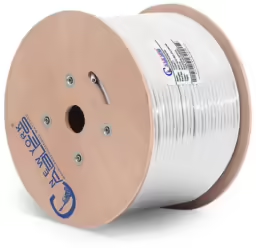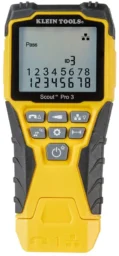Casey Liss mused about a home project to wire his whole house with ethernet, in several ATP episodes. Coincidentally around that time I had need to run ethernet to a specific device anyway. So I thought – well, if you’re going to do something, do it ad stupidium.
I discovered that someone went nuts in my house, before I owned it, with phone ports. I actually already knew about the phone ports – they’re on the walls, obviously – but what I didn’t realise is that it’s very common to use cat5 for phone lines inside buildings. So turns out I had cat5 (or cat5e) going to almost every room already. I just had to replace the keystones and do a bunch of rewiring at the other end, under the house.
That would have been it except I’m a computer nerd and, apparently, a masochist.
Cabling

I decided to reroute most of them – cleanliness is next to godliness in your wire routes – and replace most of it with cat6a. The rerouting was super time-consuming but led me to learn a lot more about my house (like that I have an entire second network of HVAC ducts, apparently not connected to anything anymore but repurposed as a condo complex for mice).
Replacing the cables turned out to be easy for most of them since I just had to stick a cable up through four feet of wall (I have no attic, just crawlspace), through existing cut-outs in the insulation, so I didn’t even need to pull wires, just push them. I used this cable which is very sturdy, so pushing wires a few feet was trivial. Also, it’s listed as cat6a-certified but it actually meets cat7a (it’s just that cat7a isn’t a real standard, so you won’t find any legitimate products claiming compliance). So it should be good for 40Gbps.
Oh, and I also had coax to lots of rooms – I’m still in the midst of pulling that out and replacing it with cat6. Who uses coax these days anyway?
Crimping


I lost two weeks to an incompatibility between a Paladin crimper and Monoprice RJ45 jacks. In retrospect a cable tester is absolutely essential – I wasted so much time thinking I wouldn’t need it, and that would have been true iff things went smoothly.
This crimper seems to work perfectly with every jack I’ve tried so far, such as these & these. Don’t try cat5 plugs on cat6 cable – the wire gauges are very different and even if you can physically force cat6 into cat5 jacks, the jack’s pins might not make good connections.
Switches & routers

I wanted to use Ubiquity gear but good luck finding anything remotely in stock. Plus it is really expensive, especially with supply-chain-shortage markups of 40% or more. Instead, I went with TP-Link Omada stuff. A basic router plus a gigabit switch.

At first I bought a PoE switch, but it turns out the fans are so incredibly annoying (13,000 RPM!) and loud enough that even though it was under my house I literally couldn’t sleep with it on (among other issues). I did put it on a Homekit plug for a few nights so I could turn it off when I went to bed, but that was a stupid setup. If I need PoE I plan to add something like this switch (or this switch if I need more power). They have no fans. I’m thinking I might switch my wifi to these (I’m currently trying to wait until Wifi 6E versions come out).
So far they all work fine (notwithstanding dodgy traffic counters in the router1), and are reasonably easy to configure. I haven’t actually installed the Omada central controller software on e.g. a Raspberry Pi yet – I just use their web interfaces individually. If I get more Omada devices it might make sense to have a centralised management UI.
Roads not travelled
I considered 10Gb switches, but while you can get the gear it’s stupidly expensive. I used to work at Google in the datacentre hardware group and I actually have an idea what fast networking gear costs, so I refuse to pay 10,000% markups. I tried looking for 40Gb stuff, but good luck even finding it, let-alone the second mortgage.
2.5Gb switches might actually be a good option, though – they match wifi speeds well-enough, and some PoE-powered access points have 2.5Gb uplinks. It just didn’t make sense for me with my barely-broadband internet connection and zero NASes. Plus I found it easy to just route more cables to each room if I need more bandwidth (I put 4+ port faceplates on everything, for future expansion).
I looked into fibre, and it’s actually quite cheap for the fibres, but everything else is really expensive and awkward. Every actual use of it requires adaption to ethernet anyway. I’m irrationally into advanced technology but I still couldn’t make a remotely persuasive case for it. 40Gb fibre transceivers are comically expensive on the public market, and even the most absurdly round-about cable runs in my house were well below 100 metres, so cat6a should be fine.
In retrospect I kind of wish I’d gone with insulated cat6a, to eliminate any possible concerns regarding crosstalk or interference more generally. But perhaps it’s easy to say that – the crimping might have been a lot more time-consuming, and literally bending the cable to my will would presumably have been more difficult. Though I’d definitely favour this route over fibre, that’s for sure.
Aftermath
Since my actual internet connection is a high-gain wifi antenna (I’d put it in the same ballpark as carrier pigeons or semaphore flags, so far as speed & reliability go), there was a hope that moving a bunch of stuff off my home wifi would improve my internet connection, by reducing interference.
And it has. Granted there were other changes in the same timeframe that might be contributors too, but I do think random interference with my wifi network, from things like microwaves or neighbours, was a big contributor to my poor internet connectivity. I’ve had far fewer issues since switching to ethernet. I’ve also seen my latency cut in half – now ~10ms to most websites, instead of 20+.
Basically the only things left on wifi are things which only have wifi – random Homekit devices, my thermostats, iDevices, etc. But those use the wifi so sparingly that I think they can be ignored as interference sources.
- They are updated only once every fifteen seconds (which upsets a lot of SNMP clients), and by default don’t count most traffic – you have to enable Bandwidth Control as a workaround, as it has the side-effect of forcing all routing & switching to be done by the CPU rather than hardware offload (only the CPU increments the packet counters). ↩︎